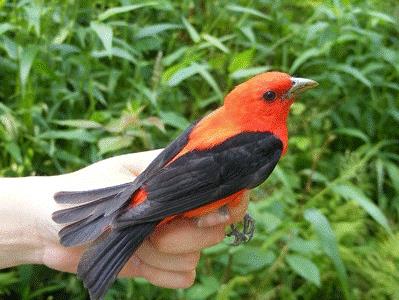The Tanager and the Oak
Here in the Midwest the arrival of spring migratory birds in happening in earnest. Birders who are far more skilled will remind us that such animal migrations are happening all the time. I am aware of this, but I will admit to a bias for this season, looking forward to the colorful birds that return from down south.
Earlier this week I noticed that the leaves on our native oaks (here in Cook County, anyway) are just starting to emerge. This is another sign of spring that gladdens my heart for more complicated reasons. In this part of the world our oaks are slowly losing the battle with the larger human impacts of urb and ag (urbanization and agriculture). The fragmented areas that could be hospitable to oak life are often dominated by species – both native and invasive – that are simply better adapted to modern homogenous human landscape systems.
Those of us in the Midwestern restoration biz are well aware of the multi-faceted predicament facing our native oaks. In my mind, it’s one of the more heartbreaking species declines that I can think of. I often sense that the public at large is more aware of the significant perils facing elephants and tigers in distant lands than they are of those that threaten the keystone plants of our region.
As an amateur birder one of my very favorite species is the Scarlet Tanager. It’s seems to have a permanent spot in my own Top 5. I feel like it is one of those creatures that more people need to see – if for no other reason to recognize that there is still such beauty to be found outside our doorsteps. I have no doubt that many readers out there – in the Midwestern restoration biz – also know that mature oak forests are a favored habitat of Scarlet Tanagers – and heaven knows how many other species. That said, does the public at large know of these relationships?
Here we are. Earth Day 2017 is in the rearview mirror, yet Arbor Day and Migratory Bird Day are on the horizon. Those of us who advocate for ecological restoration need to continually illustrate these various connections with our families, friends, neighbors, clients, students, and anyone else who gives a whit about the world we live in.
One month into spring is a fine time to revisit the plants and animals on our personal Top 5 lists. What was it about them that captured your imagination? What can you do to help others experience that same joy? As always – keep looking up. You never know what you might see!
(Image Credit: Scott Stoleson, USDA Forest Service)

